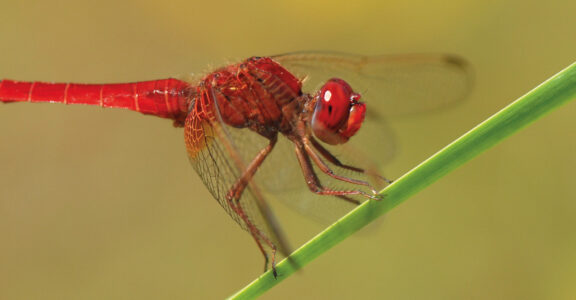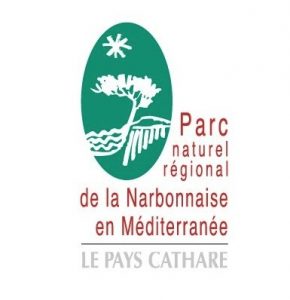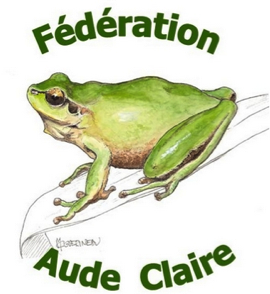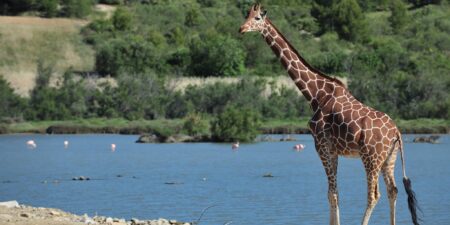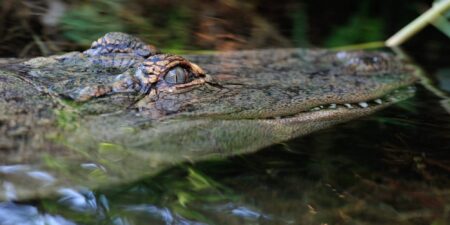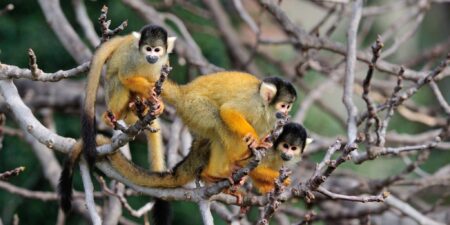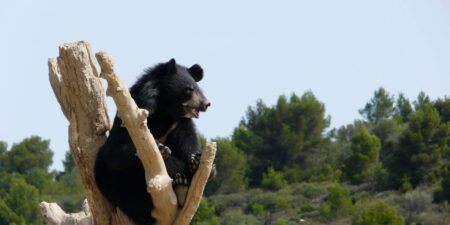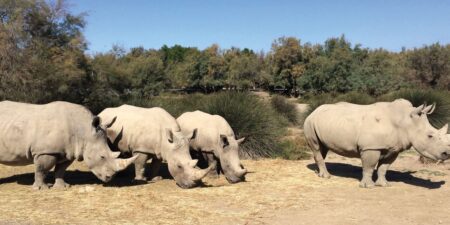The natural heritage of the Sigean reserve
The Reserve was established in the 1970s in the rare and precious landscape of the Narbonnais coastal ponds. This landscape is the result of a skilful blend between the wooded massifs of the Corbières and the brackish marshes of the coast. The meeting of these two very different biotopes has given rise to a rich diversity of habitats: grasslands, garrigues and pine forests in the upper reaches; wet meadows, sansouires, lagoons and riparian forests in the lower reaches. This varied environment naturally translates into a great diversity of flora and fauna. Add to this the tranquility of the site, the total absence of hunting and phytosanitary treatments, and the presence of large herds of herbivores synonymous with abundant food, and it’s easy to understand why the 350 hectares of the Réserve Africaine de Sigean have over the years become a veritable refuge for Mediterranean flora and fauna.
This richness is reflected in the multi-layered zoning of the Réserve Africaine de Sigean and its immediate surroundings:
- ZPS (Zone de Protection Spéciale) and ZSC (Zone Spéciale de Conservation) of the Natura 2000 network,
- ENS (Espace Naturel Sensible),
- ZNIEFF types I & II (Natural Zone of Ecological, Faunistic and Floristic Interest)
The Réserve Africaine de Sigean is also at the heart of the Narbonnaise en Méditerranée Regional Nature Park.
In 2018, to objectify more precisely the richness of this natural heritage and help us do everything we can to preserve it, we asked two local nature protection associations to carry out fauna and flora inventories on our land. This approach has highlighted the great importance of our land for the local flora and fauna, and identified the priority actions to be taken to protect it or diversify it even further.
Floraand habitats :
The Reserve’s mosaic of habitats is home to over 300 plant species. The nature of the Reserve’s soils (very calcareous and/or very salty) and the long summer droughts explain the nature of the typically Mediterranean plant life described below.
In the generally damp, salty lowlands, only a few large woody species are able to establish themselves. Two of these dominate the landscape: the common tamarisk(Tamarix gallica) and the narrow-leaved ash(Fraxinus angustifolia). Between them, these two species make up the vast majority of spontaneous trees in low-lying areas.
Other smaller species thrive in the saltier areas: Perennial Glasswort(Arthrocnemum fruticosum) andCommon Purslane(Halimione portulacoides), which form large meadows along the edges of saltwater bodies. Finally, in many places, the very vigorous Provence Cane(Arundo donax) has taken root. This giant, invasive grass, which thrives on embankments, is generally 4 or 5 meters tall and forms dense hedges that we use as windbreaks for our animals.
The higher parts of the landscape are more diverse and flowery. These limestone hills are subject to severe summer water restrictions.
The scrubland dominates and the species are typical of this environment: Oleaster(Olea europaea sylvestris), Rosemary(Rosmarinus officinalis), Gorse (Ulex parviflorus), Pistachio(Pistacia lentiscus), Juniper(Juniperus oxycerdus), Filaria(Phillyrea angustifolia), Buckthorn (Rhamnus alaternus) …
After a few decades, this habitat tends to be invaded by Aleppo pine(Pinus halepensis), a tall, twisted conifer that forms dense woodlands with little biodiversity. The conifer’s dominance generally means that the above-mentioned plants disappear, and only the Camellia(Cneorum tricoccum), a bushy shrub with small yellow flowers, seems to thrive under the conifer’s branches. Because of the Aleppo pine’s high vulnerability to fire and its invasive nature, we regularly thin out certain pine forests that are too densely populated to encourage the return of low scrubland, which is more diverse and less flammable.
In addition to these dominant species, a dozen rarer heritage species have been identified at the reserve, such as theLeaning orobranch (Orobranche cernua), theSpiny Hedysarum (Hedysarum spinosissimum), Spotted Scolyme(Scolymus maculatus) or Small Alpistum(Phalaris minor), a grass with a lot at stake that benefits from our gentle cultivation practices, with no inputs and no intensive ploughing.
The birds
This is the most visible and diverse class of animal, with nearly 230 species observed at the Réserve Africaine de Sigean!
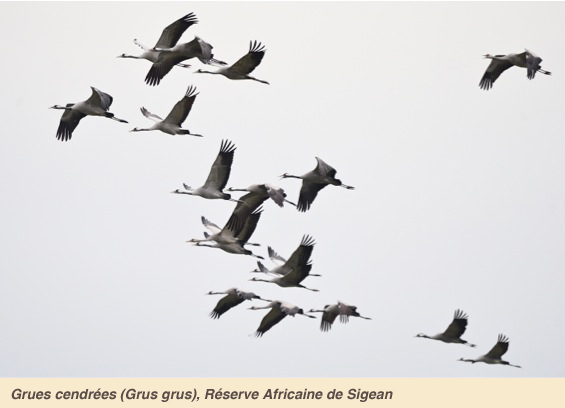
Many are part of the countless migratory birds on their way to Northern Europe (in spring) or Africa (in autumn), as the commune of Sigean lies on one of the 2 main migratory routes in Western Europe, the other being on the Atlantic seaboard. Thousands of storks, cranes, birds of prey, bee-eaters, swallows and other passerines pass overhead twice a year.
Some stop off for a short break, while others choose to spend the entire off-season here. Bird banding, practiced in all European countries, enables us to find out where the birds come from. For example, the large group of around 250 White Storks (Ciconia ciconia) wintering at Sigean is made up mainly of German birds, making it the largest group of storks to winter in France.
And the 1,500 to 2,000 Black-headed Gulls(Chroicephalus ridibundus) that spend the off-season on Ca’s eye arrive from the Benelux countries as early as September. The Greater Flamingo(Phoenicopterus roseus) is a special case: not really migratory, its populations are rather erratic. It is present all year round in fluctuating numbers (from 50 to over 1,000) on the eye of Ca, but does not breed there. The reserve’s flamingos are in fact native to the Camargue colony and all the countries of the western Mediterranean basin.
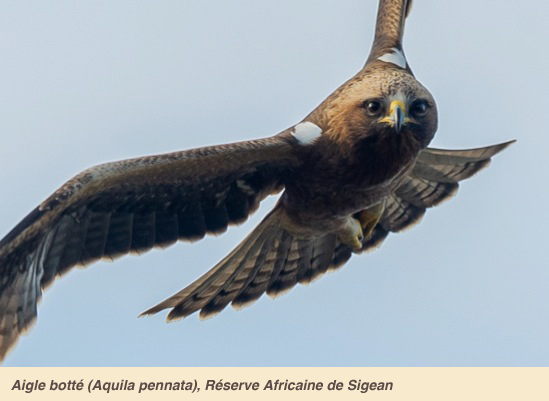
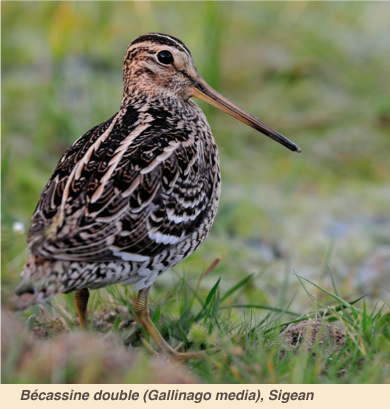
Occasionally, a rarer or stray species slips into the parade of migratory birds, such as the Black stork (Ciconia nigra), theBooted eagle (Aquila pennata), the Osprey (Pandion haliaetus), the enigmatic Great Snipe(Gallinago media) or this Franklin’s Gull(Leucophaeus pipixcan), an exceptional visitor from Canada who spent a few weeks on the Ca eye during the winter of 2014-2015.
The reserve is also home to a vast community of birds, which find the right conditions here to reproduce. The most visible are the White Storks (25 to 30 pairs), the herons (around 130 pairs of 4 different species, the largest heronry in the Aude) and the superb European Bee-eaters(Merops apiaster), around 60 pairs of which dig their burrows in our embankments.
We try to encourage the settlement of certain species by providing them with nesting sites such as platforms (for storks) or nest boxes for cave birds.
Over the years, we have equipped the facades of our buildings with over 250 nesting boxes for House Sparrows(Passer domesticus), built directly into the walls and with an occupancy rate of over 60%. If we add these pairs to those breeding in other cavities and buildings in the Reserve, we arrive at a total population of several hundred pairs of this once common bird, which is rapidly disappearing from most of our cities.
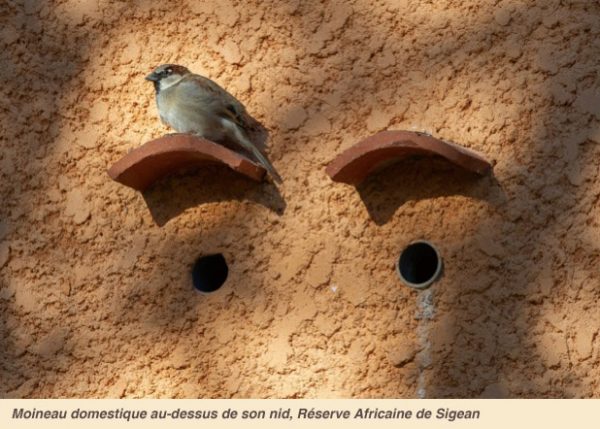
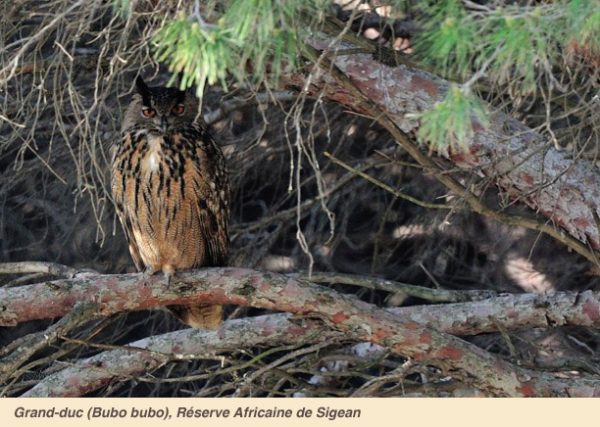
Finally, attentive observers will be able to spot our more discreet nesters such as the Crested Cochevis(Galerida cristata), the Orphean Warbler(Sylvia hortensis), the Lesser Gravelot(Charadrius dubius), the Black Kite(Milvus migrans), the Philomel Nightingale(Luscinia megarhynchos) and the very rare Red Swallow(Cecropis daurica)! And if you’re lucky, you might even spot the lord of the night, the aristocratic Great Horned Owl(Bubo bubo). It’s the world’s largest nocturnal bird of prey, feared by all birds and mammals smaller than it. It breeds at the Reserve, and analysis of over 800 prey remains found in its pellets has shown that rabbits and rats in particular had better behave themselves: they account for almost half of the prey identified! The Grand-duc generally spends its days perched quietly in a pine tree, watching the parade of visitors and waiting for evening to fall before setting off on the hunt.
Mammals
While it’s hard to miss the Reserve’s birds, mammals are extremely discreet, and most of the 40 species inventoried are nocturnal and invisible. The exception that proves the rule is thered squirrel (Sciurus vulgaris), a friendly arboreal rodent that thrives on the cones of Cypress (Cupressus sempervirens) and Aleppo pine (Pinus halepensis). You’re sure to come across it on the walking trail. When night comes, a varied fauna of small carnivores such as the Genet (Genetta genetta), the Badgers (Meles meles), red foxes (Vulpes vulpes) and weasels (Martes foina) are always on the prowl, looking for human food scraps or an unwary wild rabbit (Orictolagus cuniculus), woodchat (Apodemus sylvaticus) or black rat (Rattus rattus). Even the very discreet European Otter (Lutra lutra) occasionally frequents the banks of the Berre, a small stream whose mouth lies behind Parc de la Plaine.
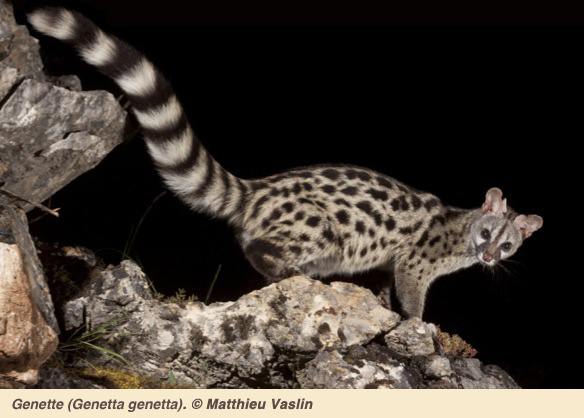
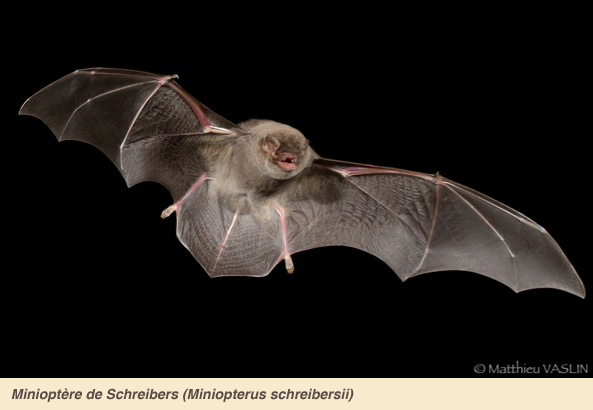
Insectivores are also well catered for, as the reserve is an ideal hunting ground for bats, including the rare Schreibers’ Miniopterus(Miniopterus schreibersii) and the Greater Rhinolophus(Rhinolophus ferrumequinum). Our buildings are home to large colonies of Soprano Pipistrelles(Pipistrellus pygmaeus), and it’s not uncommon to come across the world’s smallest mammal, the Etruscan Pachyure(Suncus etruscus), when we lift up plates or boards left on the floor for a few days. This shrew weighs less than two grams as an adult!
Reptiles
The most conspicuous amphibians are southern treefrogs(Hyla meridionalis) and laughing and green frogs(Hylax spp.). Others such as the Painted Discoglossus(Discoglossus pictus) and the Natterjack Toad(Epidalea calamita) are also present, but are much more discreet and difficult to detect.
The reptile community is highly diversified, with 7 species of lizard and 4 species of snake living on the reserve.
The most visible reptile, yet the most threatened, is probably the imposing Ocellated Lizard (Timon lepidus), which at 60 to 80 centimeters is Europe’s largest lizard. Its presence often goes hand in hand with that of the wild rabbit, whose burrows it uses for shelter. It is in serious decline in France, but at the Reserve it is still often seen on the footpaths between April and September.
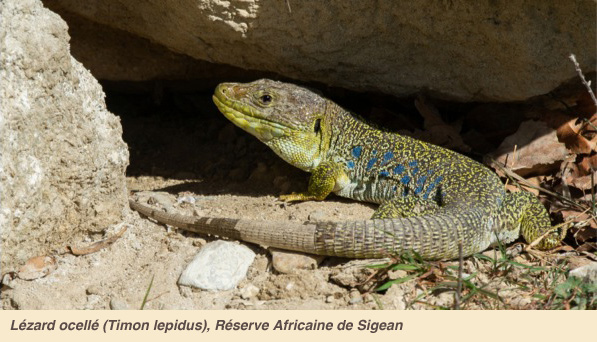
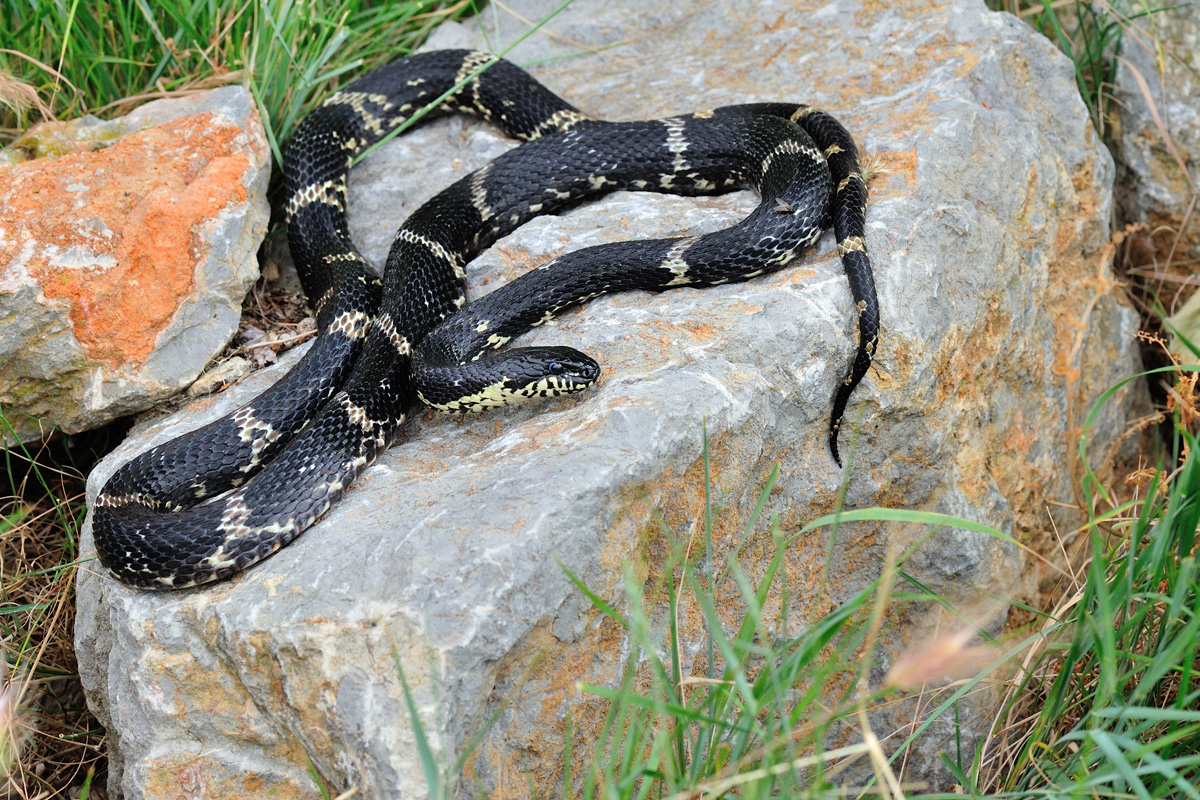
Its main predator in Sigean is the Montpellier snake(Malpolon monspessulanus), also a giant: old males are the largest snakes in Europe, measuring up to 2 meters. She’s very shy and you’re unlikely to see her. Its cousin, the Gartersnake(Zamenis scalaris), is much more conspicuous, and it’s not uncommon to see fine specimens causing panic among our visitors in summer. But it’s a snake, so it’s totally harmless! As with the rest of the French Mediterranean coastline, there are no vipers at the Réserve Africaine de Sigean.
Insects
With a class as diverse as insects, it’s difficult to know the precise status of each order represented in a natural environment. That’s why only the most visible are usually listed, namely butterflies (order Lepidoptera, superfamily Papilionoidae), dragonflies (order Odonata) and grasshoppers, crickets and crickets (order Orthoptera). They are generally good indicators of the status of the rest of the entomofauna.
Butterflies are represented at the Reserve by some forty species, including many typical of the garrigues: Amaryllis of Vallantin (Pyronia cecilia), Echiquiers d’Occitanie (Melanargia occitanica) and Iberian (Melanargia lachesis), Fadet des garrigues (Coenonympha dorus), Cramer marble (Euchloe crameri), Green marbled(Pontia daplidice) and White sailfish(Iphiclides feisthamelii). A small population of a nationally protected butterfly frequents the wet meadows at the entrance to the Reserve: the superb Diana(Zerynthia polyxena), visible briefly in spring, whose caterpillars feed exclusively on round-leaved Aristolochia(Aristolochia rotunda).

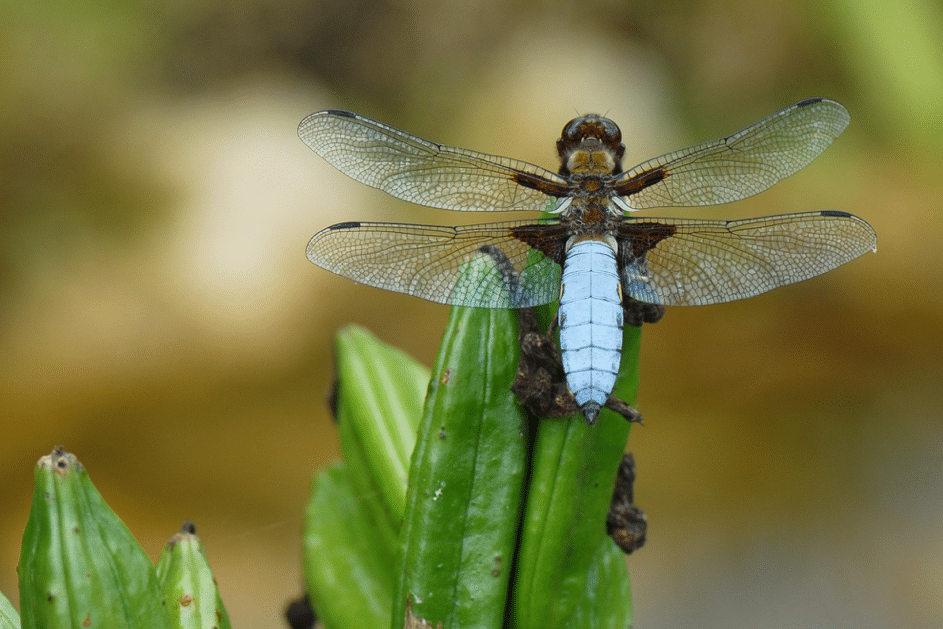
A study of the Reserve’s dragonfly population reveals a rich and varied assortment. It is home to pioneer species such as the Sympétrum strié (Sympetrum striolatum), species typical of brackish waters such as the Sympétrum de Fonscolombe (Sympetrum fonscolombii) and theNeapolitan Anax (Anax parthenope), species of the brook and small river cortege such as the Virgin Calopteryx (Calopteryx virgo) and theOrthétrum bleuissant (Orthetrum coerulescens) or large rivers such as the Blue Pennipatte (Platycnemis pennipes), as well as pond species such as the Nymph with a body of fire (Pyrrhosoma nymphula) and theElegant shag (Ischnura elegans) and pond dwellers such as the Winter Brunette(Sympecma fusca) and theEmperor Anax(Anax imperator). In all, more than thirty species have been recorded, including the rare Blue Agrion(Coenagrion caerulescens), a small dragonfly endemic to the western Mediterranean basin. It is one of 18 species to benefit from a National Action Plan and is considered “Endangered” in France.
Finally, the study of the Reserve’s grasshoppers, crickets and crickets revealed only one species of concern, the remarkable Serrated Curlew(Saga pedo). At 17 centimeters, this giant “grasshopper” is Europe’s largest orthopteran, and has the particularity of being wingless, carnivorous and parthenogenetic, whereas other orthopterans are generally flying, vegetarian and sexual. Despite its size, it is extremely discreet because, unlike other grasshoppers, it is unable to take off when approached, relying on its immobility and mimicry to protect itself from predation.
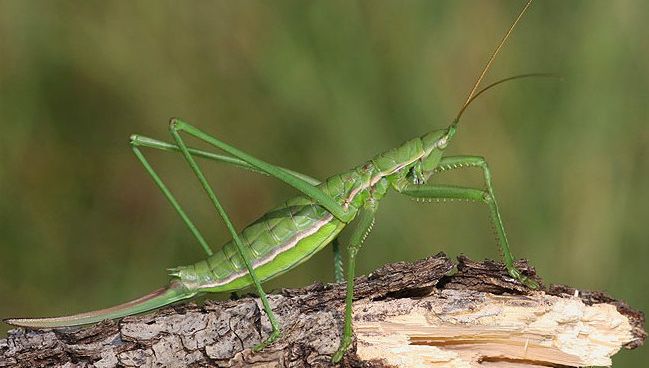
A quantitative study of orthopteran densities should be carried out at the Reserve, as these insects represent a large and well-distributed biomass, used by many secondary predators for their food (birds, bats, reptiles, etc.). These characteristics and their position in the trophic chain make them an essential link in the overall functioning of many ecosystems. They are therefore good models for measuring the conservation status of habitats and evaluating the management implemented.
Source: LPO Aude & Fédération Aude Claire (December 2018), Inventaires des propriétés de la Réserve Africaine de Sigean sur le secteur dit ” Deume “, ” Les Courbes “, ” Œil de Chat “, ” Embouchure de la Berre ” (communes de Sigean et Peyriac de Mer).
The complete results of these inventories can be consulted HERE eand the management plan HERE .
